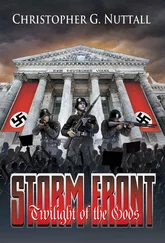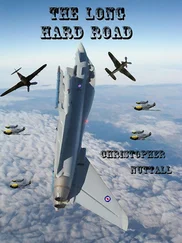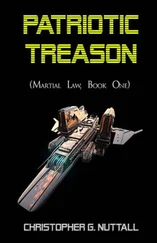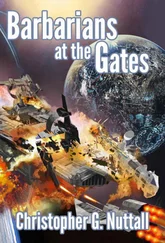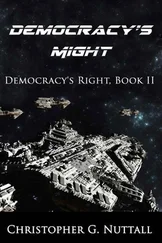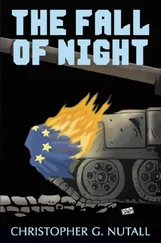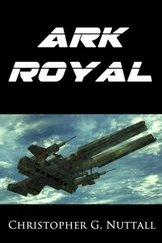The immediate German response was to diversify their industry and move at once to a ‘guns and guns’ economy, particularly in the wake of the first British cruise missile attacks. Production of the Panzer IV, and then later the modified Panzer V (which has features in common with both the Panther and King Tiger of OTL) was standardised as quickly as possible, removing the need for superlatively-trained workmen. German propeller fighters, including ME-109s, were also mass-produced, along with a new pilot-training program. Considerable resources were also poured on a ‘semi-V1’ cruise missile, but until 1941 the V1s remained very unreliable, showing a 30% launch failure rate and only 5% impact rate. Until 1941, in addition, the V1s were effectively being fired blindly at Britain; civilian airports were targeted, military airfields were hardly targeted. (This was later discovered to be because of the 2015 airfields not having existed in OTL 1940; the Germans launched at 1940 locations.)
The Germans did attempt to mass-produce a modified ME-262, a jet fighter, but apart from a few prototypes they were unsuccessful. The original design had been improved by hobbyists over the years, but it still required more materials then Germany – even with access to Soviet supplies – could spare. A handful of fighters were produced for special missions, but the bugs were never fully worked out.
Finally, despite considerable protest the Kriegsmarine abandoned any surface program after most of the fleet was destroyed with ease. Production was concentrated on u-boats, attempting to minimise the sound emissions, but the electric-powered ships were never a match for modern submarines from 2015. Once the sonar barrier was established, only a couple of very lucky u-boats were able to make it into the Atlantic. As priorities changed, the Germans abandoned naval programs almost completely.
Longer-term, the Germans concentrated on nuclear, biological and rocket weapons, using the information they had discovered onboard the 747 to force their own programs forward. Jewish scientists were recruited (this truth was kept from Hitler) into the project and used to turn the details in the recovered information into reality. Again, concentration was focused on turning the project into an engineering challenge, rather than developing a whole new field, and progress was steady. The most optimistic estimate placed the German K-Bomb ( Kern Bomb) in 1942.
Although the RAF attempted to damage the German economy, the strikes were never as effective as they might have been, largely due to domestic political concerns. For example, dams and slave labour camps were never struck, nor were factories plastered with the level of firepower required to seriously degrade them for longer than a few days. In essence, the Germans managed miracles of short-term production, but at the cost of limited long-term success.
Politically, particularly since North Africa fell to British forces, Hitler worked to pull Italy, Spain and Vichy France into the Tripartite Pact. Although a semblance of independence was permitted, all control remained firmly in German hands, working towards a final German victory. Ironically, this helped the Italian economy; many of the bureaucrats who had strangled it were summarily dismissed or shot by German planners. One particular benefit from this was the development of advanced radar; an Italian had invented the best radar set in 1940 and this was placed into mass production at once.
On the global stage, the alliance with Japan was confirmed and a new alliance was formed with Stalin, who was aware of the judgement of history. Although all sides saw this as a temporary expedient, this new Tripartite Pact managed to work together in reasonable harmony. Cooperation, however, was hampered; several of the best Russian generals of the Second World War were fingered as later traitors by the Germans, weakening the Soviets in the long run.
Appendix Three: Soviet Responses to the Transition, 1940
It was not until nearly two weeks after the Transition that Stalin realised that something had happened, and only then through the Germans and French Communist sources in France. (Later, Soviet spies in the United States would also provide a stream of data, although many had been removed or isolated.)
Hitler’s flunky, Ribbentrop, approached the Soviets soon afterwards, offering an alliance against the future. Although Stalin was eager to accept – historically the Soviets had attempted to join the Tripartite Pact – joy turned to alarm when they read the German computer files on the Second World War. Although Stalin believed the German claim that the Russo-German war had been caused by Allied manipulation, the Soviets started a very careful defence program.
The strategic decision to concentrate on the Stalin Line, a line of defences in pre-1939 territory, doubtless made the task of defending the USSR easier. The joint – and very private – agreement with the Germans to literally exterminate the Poles was executed by the NKVD, which had been tripled in size following the discovery of those who would later betray Stalin. Units from the southern SSRs and Siberia conducted most of the ‘slash-and-burn’ missions, units of doubtful loyalty that were considered expandable. Polish resistance was brutal, but succumbed to overwhelming firepower.
In addition, a political decision was made to settle the tensions in the Far East, following the Nomonhan Conflict. The USSR gave up some ground to Japan; Stalin had concluded that it could be recovered when they were ready, and Soviet support for the Chinese – communist or nationalist – was terminated.
Although a massive program into scientific research was forced forward, the USSR lacked the priceless technical data the Germans had amassed, and remained behind on atomic power as well as jet engines and other related areas. The Germans shared some information, mainly concerning submarines and other areas that didn’t threaten the Reich , but it wasn’t always trustworthy. Production-wise, the Soviets forced-forward production of T-34s (and finished the JS-1 design), and – ironically – a knock-off version of an AK-47 that had been captured in the Dutch East Indies by the Japanese and passed on to the Soviets as part of an exchange deal.
One area in which the Soviets had an unsurpassed advantage was in the field of biological weapons. The process was forced forward as fast as it could – ‘accidents’ were covered up despite some exaggerated fears of accidentally exterminating the Russian people – and these were field-tested in Afghanistan in the hopes that the diseases would spread into India. The Soviets also worked on delivery systems, but were forced to rely on the Typhoid Mary principle until rocket systems were ready.
Finally, and with the agreement of the Germans, the Soviets acted to remove foreign threats to themselves. Finland was invaded (with German permission) and the population crushed. Despite the brutality of the Soviet invasion, resistance was fierce and remained in existence for years afterwards. Afghanistan was also invaded on a trumped-up pretext, using programs designed to exterminate the population. This was conducted so well, including biological weapons, that the population was reduced significantly, although in some cases the diseases spread to Soviet troops. As part of long-term geopolitical desires, Iran was invaded, which brought Stalin into confrontation with British forces.
If the Shah had believed in the threat, it might have been possible for the British to mount a defence of Iran. As it was, the Soviet advance was almost unchallenged – the Iranian equipment was badly outdated – and continued until they outran their own logistics. RAF air attacks made a bad situation worse, but the Soviets were always able to move forward, if only at a crawl. Iranian resistance became better coordinated as the Soviets closed in on Tehran, but the flight of the Shah made further resistance seem hopeless. The Turkish declaration of semi-belligerency, a curious legal fiction, unravelled the entire British posture, therefore allowing Stalin’s men to complete their work.
Читать дальше

